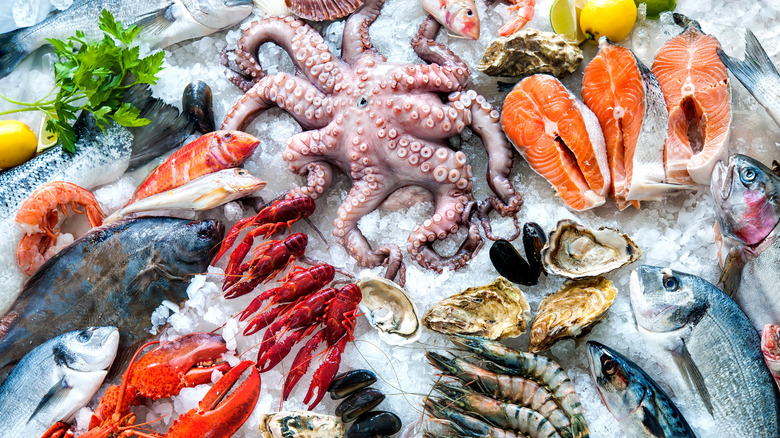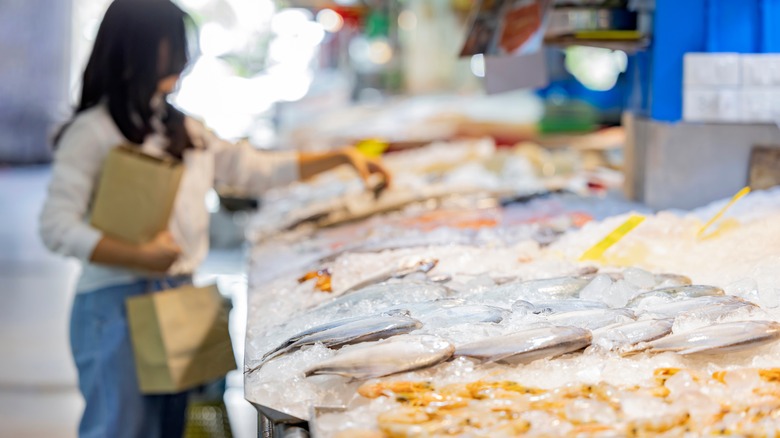The Quality Myth About Fresh Seafood You Should Stop Believing
If you believe the freshest seafood is whatever is most local to you, it's time to rethink. In a conversation with Tasting Table, Joe Gurrera, the owner of Citarella Top Quality Seafood & Fresh Fish Market, debunks this myth, offering insights into what really determines the freshness and quality of seafood. Gurrera explains, "Freshness of fish is determined by a number of factors, and no matter where it comes from, the way the fish is caught and handled plays a major role in its quality. Seafood needs TLC." He emphasizes that the origin of the fish is less significant than how it is treated from the moment it's caught. He added, "Different bodies of water and types of water all grow different types of fish ... What matters is that the fish is growing in a healthy environment and handled properly from water to table."
A prime example of proper handling is the Norwegian approach to salmon farming. In Norway, the focus is on sustainable farming practices and the well-being of the salmon, which are raised in spacious, clean waters, mimicking their natural habitat as closely as possible. In Japan, sushi preparation provides another striking example. Contrary to the notion that only the most recently caught seafood is desirable, Japanese sushi masters often age and cure select cuts of fish, a technique that significantly enhances the umami and flavor of the fish.
Use your eyes and nose to pick out the highest quality seafood
Beyond busting a myth, Joe Gurrera offers valuable tips for picking out the highest quality seafood, transforming you from a seafood consumer into a connoisseur. "Take time to compare the fish, paying close attention to what looks and smells good and what doesn't. If it smells fishy, it isn't fresh," advises Gurrera. Aside from using your sense of smell, it would be best to use your eyes and trust what you see. He elaborates, "You'll be looking for bright, shiny skin that glistens. Any spots, lines, or markings should be sharp and crisp. Think HD." This analogy to high-definition quality makes it easier for shoppers to understand and highlights the importance of visual inspection. You don't want to buy seafood that looks mushy, dull, or too slimy.
So, the next time you find yourself in the seafood aisle, remember to engage more than just your shopping list. Use your senses, especially your sense of smell, and trust all of the visual cues from the seafood. But, don't stop there. Why not dive into the story behind your seafood? Inquire about how it was farmed or caught and the care taken in its journey to the market counter. A conversation with a knowledgeable fishmonger can be enlightening. Or, drop by Citarella's markets in either New York City or Greenwich if you happen to be in town.

